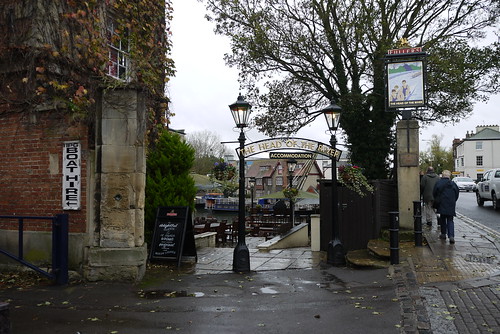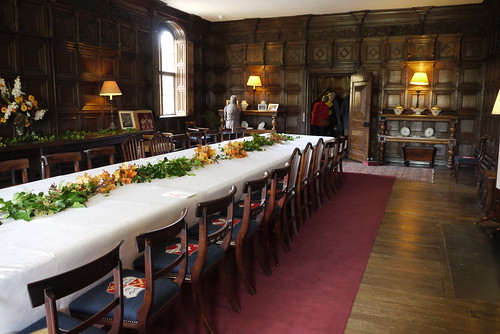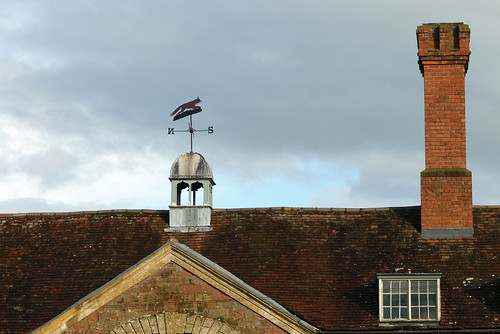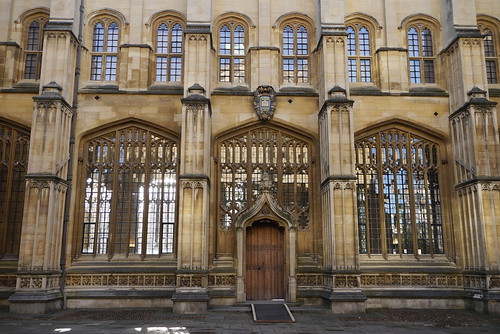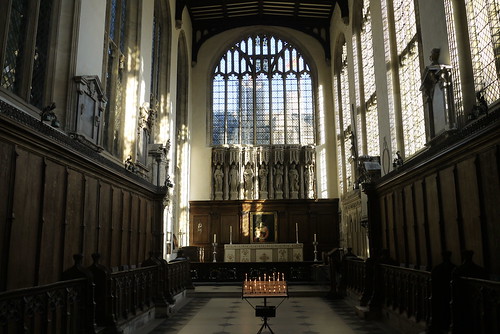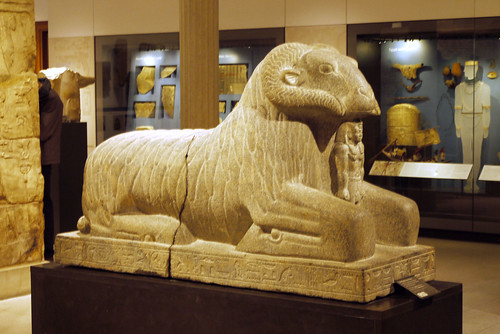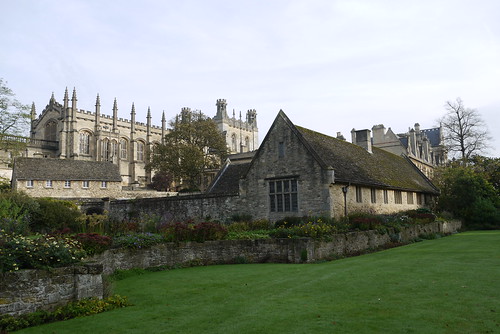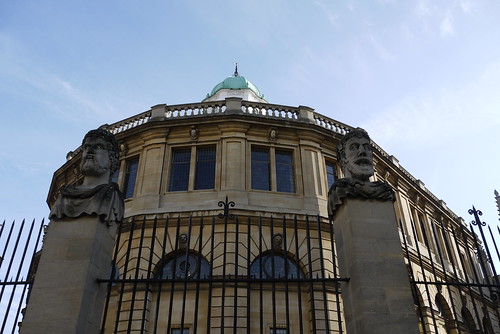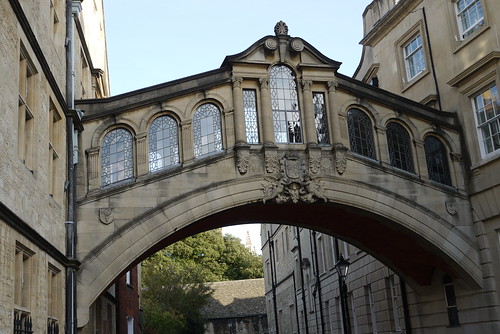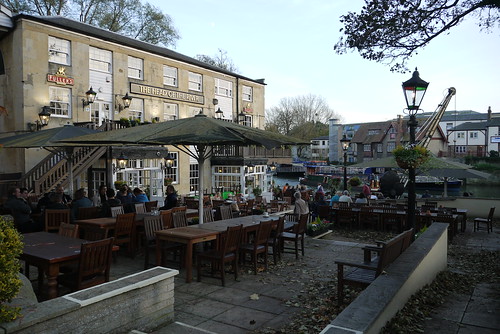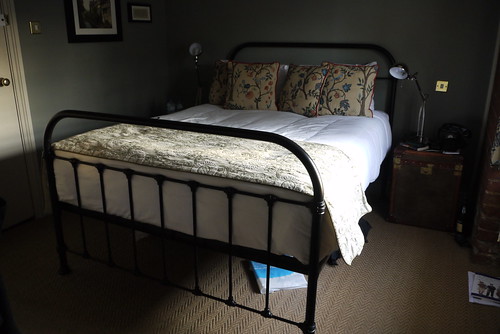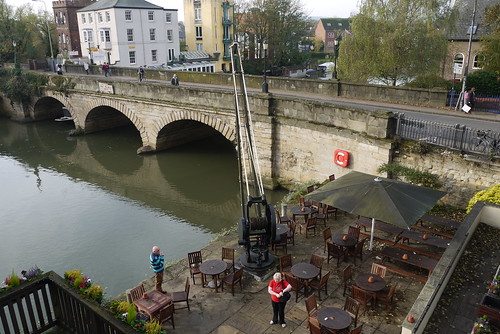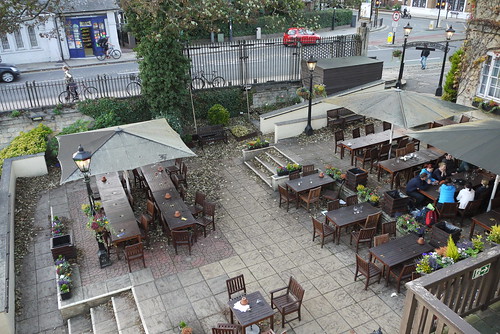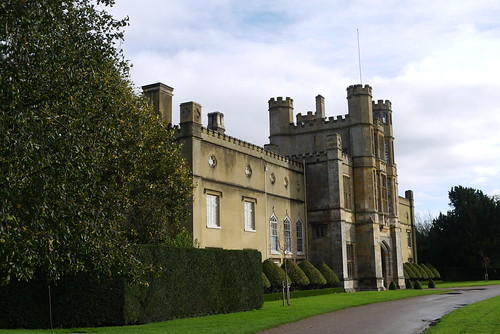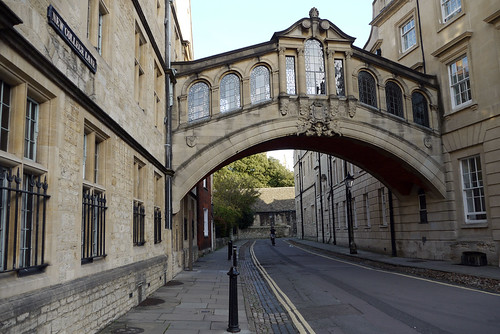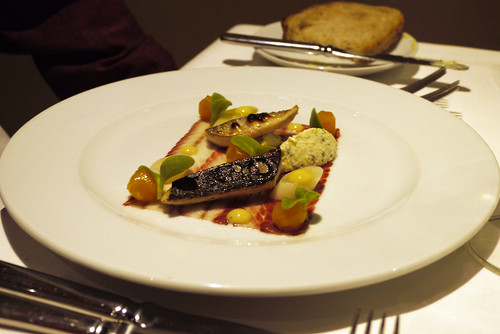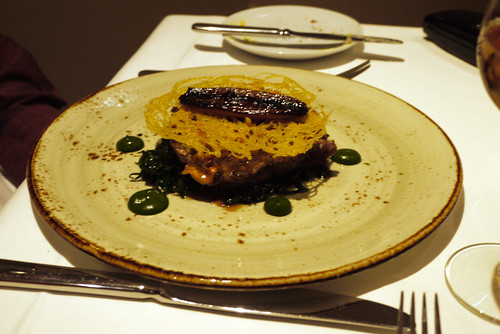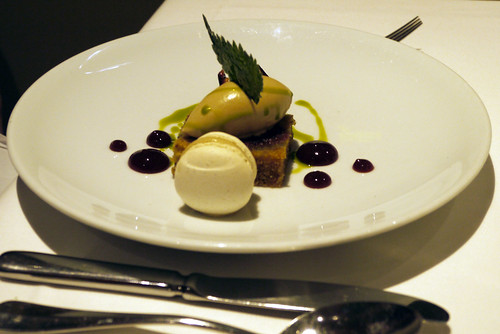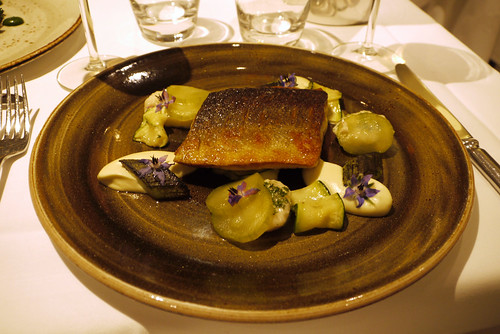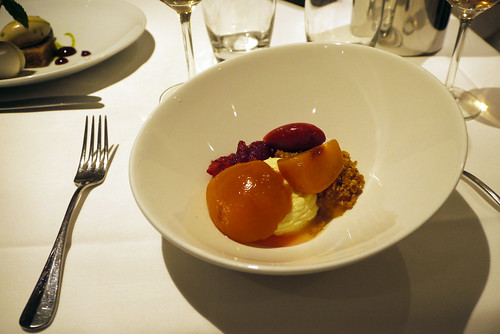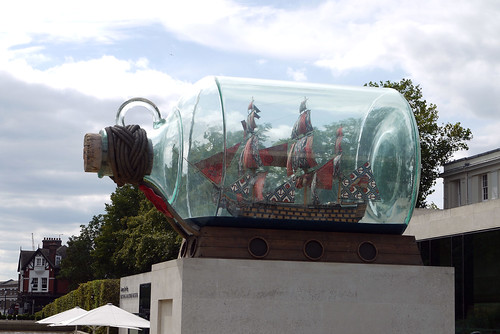Thousands of candles can be lighted from a single candle, and the life of the candle will not be shortened. Happiness never decreases by being shared.
Tag Archives: Weekend away
Oxford – Day Four
I ordered egg and bacon for breakfast which I was expecting to be a small portion without all the added extras of a full cooked breakfast. I was wrong, I was served double quantities of egg and bacon! After breakfast we packed our cases into the car and set off towards Coughton Court which was our chosen stop off point on our journey home. On arrival at Coughton Court we had a cup of tea before taking a tour of the house.
Unfortunately it was raining heavily during our visit which meant we weren’t able to visit the garden and that photo opportunities were limited. However we did drop lucky when we visited the Anglican Church just as a historian started to give a very interesting and informative talk on the history of Coughton Court and the Throckmortons. After the talk it was time for lunch before continuing on our journey home. After such a large breakfast all I needed was a small cake to tide me over until our evening meal.
Oxford – Day Three
After breakfast, where the correct amount of toast for three people was served, we set off for the Bodleian Library. On our way there we stopped off at the “Oxford University Press” bookshop. I am a fan of their “Very Short Introductions – To Almost Everything” and I was in my element seeing the full collection lined up in one place. We decided to return later to make some purchases.
On arrival at the Bodleian Library we purchased tickets for the tour then sat in the library hall waiting for the tour guide. Mum rushed out at the very last minute saying she didn’t like the thought of the steps in the library… As it turned out her departure was unnecessary, the steps were only a small (easily missed) part of the extremely interesting tour of the building. When we located her after the tour it transpired that she had gone off shopping!! After the tour I purchased a book in the Bodleian Library shop before returning to the Oxford University Press bookshop to purchase three of their short guides for the price of two.
At this point it was time for Mr C to move his car from the hotel car park as we did not have an allocated space for that evening. Mr C deposited mum and I in M&S, the place that mum was aiming for and failed to find on her errant shopping expedition. I am not really a good person to go shopping with because I dislike shopping. I did however spot a lovely glass necklace and bracelet and treated myself for my birthday 😉
When Mr C returned from moving his car we headed off for a creperie that Mr C had seen an advert for. When we arrived it turned out to be a mobile road side booth. We eventually found somewhere more suitable and sat outside enjoying our lunch in the unseasonably warm weather. After lunch we made our way to the University Church of St Mary which we found very interesting.
We then made our way to the Ashmolean museum, taking in Blackwell Bookshop along the way. On arrival at the Ashmolean it was time for a cup of tea before exploring the Ancient Egyptian and Syrian halls, after which it was time to return to the hotel and rest our weary feet and freshen up before our evening meal.
We struggled to find a place to get booked in to. We ended up finding a table available at the Brasserie Blanc. We traveled by cab to save our weary feet. The brasserie had a nice ambiance and the food was delicious. After the meal we returned to The Head of the River for a nightcap and to pack our cases for the journey home…
Oxford – Day Two
Breakfast was cooked to order and very tasty, although it was a little odd that we had two rounds of toast for three people. When we had finished the two pieces we asked for a bit more. After breakfast we set off towards Christ Church College and walked through the memorial garden and water meadows before joining the queue to enter the college. I say joining the queue, in fact there were only two people in front of us but by the time the doors opened, ten minutes late there was a large queue behind us.
We enjoyed the college and the Cathedral, where in the shop I found the Pitkin Guide to Oxford. It shows the best of Oxford via two walking tours. As luck would have it we were part way through the route of one of them. We carried on along the route to the science museum and stopped for a brief visit before carrying on past the Bodleian Library to a nearby pub for lunch. The pub was a bit chaotic but we managed to find ourselves a quiet corner to sit.
After lunch we returned to the Bodleian Library but opted out from rushing to join the last tour of the day. We visited the library hall, with the intention to return the library for a tour the following day. We then carried on along the walking route passing under ‘The Bridge of Sighs’, which is so named due to the apparent resemblance to its Venetian namesake. Just past the bridge we took a slight detour down a narrow alley to find The Turf Tavern where allegedly Bill Clinton imbibed in some ‘pot’. We then continued along the walking route passing many historic buildings, stopping off in a Viennese cake shop to indulge in tea and cake…
We then made our way back to the hotel to freshen up before our evening meal in The Quod Brasserie. On our walk to the brasserie it was lovely to see young ladies in long dresses and young gentlemen in suits and ties queuing up for a function in the college. After dinner we returned to the hotel for a nightcap before retiring to bed.
Oxford – Day One
We packed the car and then went to collect my mum before setting off on our journey to Oxford (one year later than planned). The journey was slower than expected due to other drivers tootling along. Along the way we stopped off at Chipping Campden, where we had lunch in a lovely tea room. I chose sauteed mushrooms on rustic bread, it was delicious. After lunch we took a stroll around the delightful village before continuing on our journey to Oxford.
Our destination was The Head of the River which is a Fullers Pub with rooms. All the rooms have literary names and the wallpaper in the corridors also carries the literary theme. Whilst I unpacked, Mr C set out into the city to find somewhere suitable to eat. This is a standard ritual for our first night away and it normally takes him about 30 minutes. An hour later there was still no sign of his return…
I sent him a text to make sure he hadn’t fallen in the river 😉 Apparently he had managed to get lost, not once but twice and in his confusion he ended up in a street named ‘Turn Again Lane’, at which point he thought someone was having a laugh at his expense!!
Eventually Mr C returned…
On this occasion his recce was not a complete success because we still ended up walking rather a long way before we found the ideal place for our evening meal. Eventually we settled on the Red Lion which has an extensive ‘pub food’ menu. By the time we arrived there my legs had become quite wobbly due to not having eaten for seven hours. Whilst we were there The Pope and a Knights Templar (followed by several young ladies) tried to enter the pub… They were informed that if they wished to enter they would have to disrobe. A few minutes later two young men (followed by several young ladies) entered the pub.
Thankfully my legs were almost fully restored when it was time to leave for the return walk to the Head of the River where we had a nightcap overlooking the river before retiring to sleep in Oscar Wilde.
A Room with a View
Remember, Remember…
On the way home from my recent weekend in Oxford, we stopped off at Coughton Court. The beginning of November seems an appropriate time to visit Coughton Court because it and the Throckmorton family who owned it played a pivotal role in the Gunpowder Plot of 1605.
The plot was the climax of a series of Roman Catholic conspiracies against the Anglican Church and monarchy due to their persecution of Catholics and also the measures taken against them to stop them practicing their faith.
Catholic persecution started during the reign of King Henry VIII, who at the start of his reign was Catholic as was every Christian in England at that time. This changed when the Pope in Rome refused to annul Henry’s marriage to his first wife, Catherine of Aragon, in 1533. The request for annulment was made because Catherine had not produced an heir to the throne. The refusal from the Pope led to Henry declaring that his marriage to Catherine was over and him proclaiming himself as head of the English Church therefore breaking away from the Catholic Church.
During subsequent successions of monarchs the two competing denominations each learned to fear the other’s rise to power. The reigning monarchs of the day’s religious allegiance always led to suppression of the ‘other’ denomination. Heightened persecutions of Catholics were put in place when Elizabeth I re-established the Church of England after she came to power in 1558. Catholic Mass became illegal and attendance at Anglican Church services was mandatory with non-attendance leading to heavy fines. All recusants were listed and their names known by the Government. The heads of Catholic families were frequently imprisoned and in 1593 an act was passed that restricted the recusants’ mobility to a 5 mile radius from their homes.
Catholics who did not wish to renounce their faith continued to worship in secret. The sacrament was given by Jesuits who had trained in Europe and came illegally to England. These services took place in secret chapels within homes of prominent Catholics. These precautions were necessary as the houses were regularly searched and if the priests were discovered they would be sentenced to death.
Against this backdrop ‘The Gunpowder Plot’, a scheme to blow up the Houses of Parliament killing the King and his Government, was conceived and led by Robert Catesby. There were 13 major players in The Gunpowder Plot; all were ‘recusants’, devout Catholics who rejected the Church of England and wished to practice their faith without persecution. Many were kinsmen of the Throckmortons and other Old Catholic families. They believed that if the Protestant King James and his government were removed from power they could start a rebellion and restore England to a Catholic country. One of the plotters, Sir Everard Digby, moved into Coughton Court which was to be the base for the conspirators.
The plot, however, was foiled, at the turn of midnight on November 5th 1605 just hours before King James I was due to open Parliament. A bearded man dressed in a dark cloak was discovered acting suspiciously in the cellar beneath the House of Lords. When searched he was found to be carrying a watch and some matches. Closer inspection revealed 36 barrels of gunpowder hidden in bundles of firewood. The man, Guy Fawkes, was arrested and brought before the King for questioning where he admitted his intentions. Initially he refused to give his real name and denied the involvement of others. This led to him being tortured to reveal these facts leaving him a broken man hardly able to sign his confession.
Instead of the remaining conspirators using their planned route to join a Midlands uprising, the plotters now had to use the route as a means of escape. The conspirators were hunted down and captured. All were found guilty of high treason and sentenced to death. The Throckmortons were not directly implicated because Thomas’ permanent residence at the time was his house in Weston Underwood having rented Coughton Court to his cousin Digby in 1604. The heads of the so called traitors including those who had died trying to flee were placed on spikes as a chilling deterrent for any other would-be plotters to king and Government.
Each year before the annual state opening of Parliament the cellars of the Palace of Westminster are searched by the Yeoman of the guard. The legacy of a custom that was established after Guy Fawkes was discovered on the 5th November 1605.
- Sources: The 2009 and 2012 editions of the National Trust guidebook to Coughton Court and The Gunpowder Plot and the connections with the Throckmortons of Coughton Court (Jarrold publishing and Coughton Court 2013)
The Wanderer Returns…
…from her latest travels.
One year later our aborted 2013 trip to Oxford went ahead. I will be posting more on my Oxford travels soon…
Kitchen W8
On arrival at Kitchen W8 we were offered an aperitif, perhaps we would like champagne? A perfect option to celebrate the birthday of a gentleman reaching a certain age. The food was delicious, the waiter attentive and always asking before pouring more wine. A perfect end to our stay in London.
His Choices:
Her Choices:
Nelson's Ship in a Bottle
By Yinka Shonibare
Shonibare’s scale model of Nelson’s flagship, Victory, is the world’s largest ship in a bottle. The model is rigged with sails, naval ensigns and signal flags shown as they were on the day of the Battle of Trafalgar. The only significant departure from historical reality is the design of the 37 sails, which derives from the brightly coloured patterns of Dutch-was fabric.*
*Info from a sign board next to the ‘ship in a bottle’.


